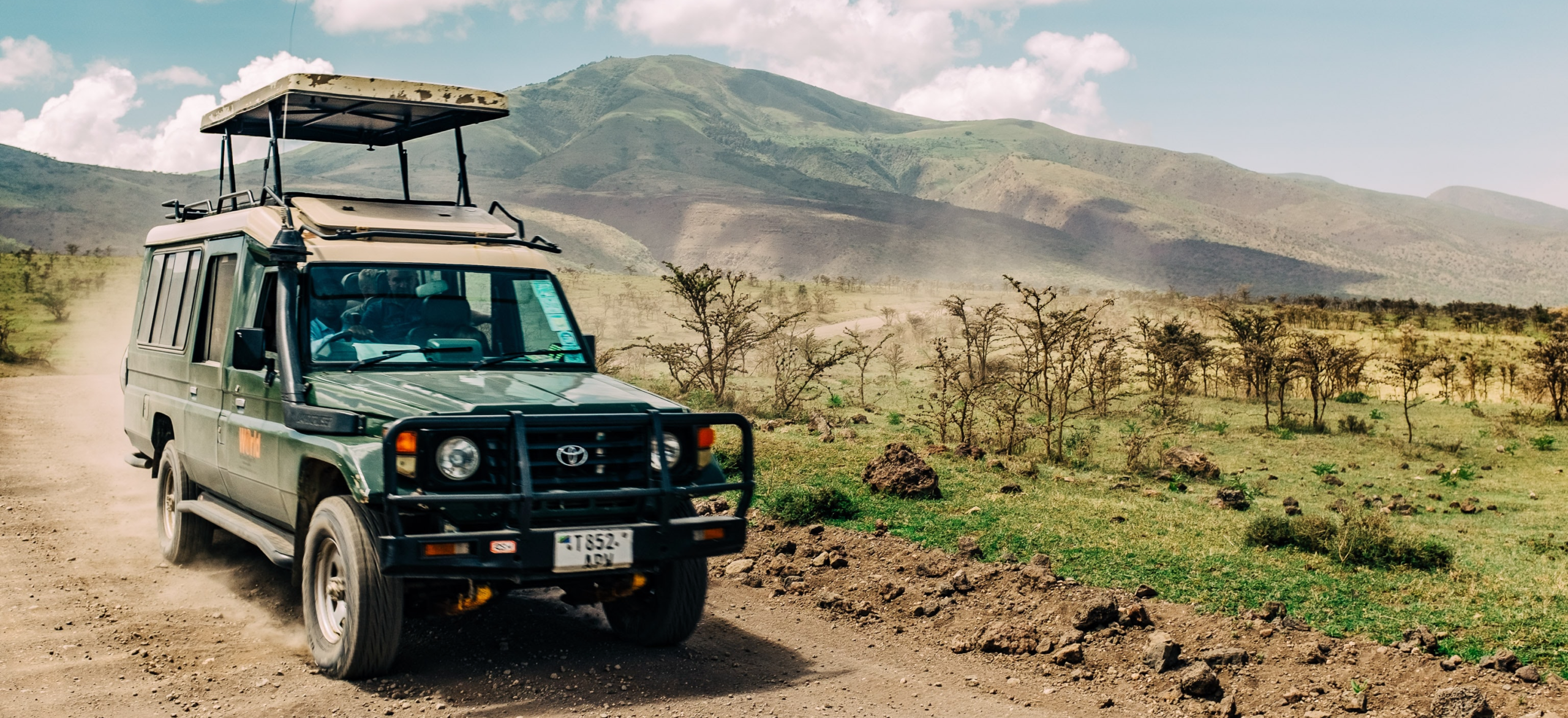Selling The Safari: An ’86 Catalog Experience

Just like brands, marketing evolves over the years. Fonts come in and out of style, headline treatments change, colorways in product and design evolve – but the best examples of both pay homage to where they came from, and aren’t afraid to return to it now and again. I recently stumbled across a catalog from 1986 that sent me down fast fashion memory lane, to revisit khaki-toned safari jackets and clothing stitched for adventure. Whether it’s in a mall, a stand-alone store, or online, the Banana Republic we know today looks a bit different than it did in the 1980s, but the vestiges of the explorer style it started with still remain.
Let’s revisit this catalog to see some surprising differences, unexpected similarities, and an illustration (quite literally) of how Banana Republic used to tell its story. We’ll examine the practical elements of their book and their brand, looking back at where they’ve been, and ahead, to what they can apply in the future.
Brand Building
In order to understand the brand narrative constructed in this throwback catalog, it’s important for a modern reader to get a quick crash course in the history of Banana Republic itself. What eventually became the archetypal mall store, started with a couple, military surplus, and a vision of adventure-wear founded in high-quality, natural fabrics. Mel and Patricia Zeigler started their company with 500 Spanish paratrooper shirts. Their stylish cut and unique details stood out and helped them envision a retail experience built on military surplus and exploration. After purchasing the shirts in bulk, all 500 arrived with one key flaw, the sleeves on every shirt were at least two inches too short. While this might have spelled disaster for many start-up brands, in an emblematic turn of events Mel and Patricia instead turned to the power of a good story and marketing, creating a fictitious tale about Spanish General Franco’s refusal to allow long-armed paratroopers in his army (hence the short sleeves). Customers were delighted by the blatant fiction, purchased and then rolled up the sleeves on their new shirts, and the military-chic beginnings of Banana Republic were under way.
I refer to this situation as an emblematic approach, because over the years the Ziegler’s would capitalize on this blend of fact-and-fiction storytelling to build their brand, and more importantly their catalog of apparel. We don’t have time to delve into their quick rise to success, stitching together sleeping bags, surplus fabrics, and mattress covers into stylish blazers and shirts. Nor to talk about the brick-and-mortar stores that began erupting in malls across the country featuring jeeps seemingly charging through window displays, aircraft hulls as clothing racks, and of course the ever-present faux-elephant tusks and big game accoutrement. As years went on, the company was acquired, grouped into a higher quality segment of fast fashion, and its expeditionary history down played – but a casual glance through their current product list will show linen suits and cable knit sweaters that hearken to their travel-minded beginnings.
Now that we know where they started, and where they are now, we can jump into the lifestyle focused catalog from 1986 to see how they used to tell, and more importantly, show the world what Banana Republic saw for itself and its consumers. There’s no better place to start than with their catalog cover.
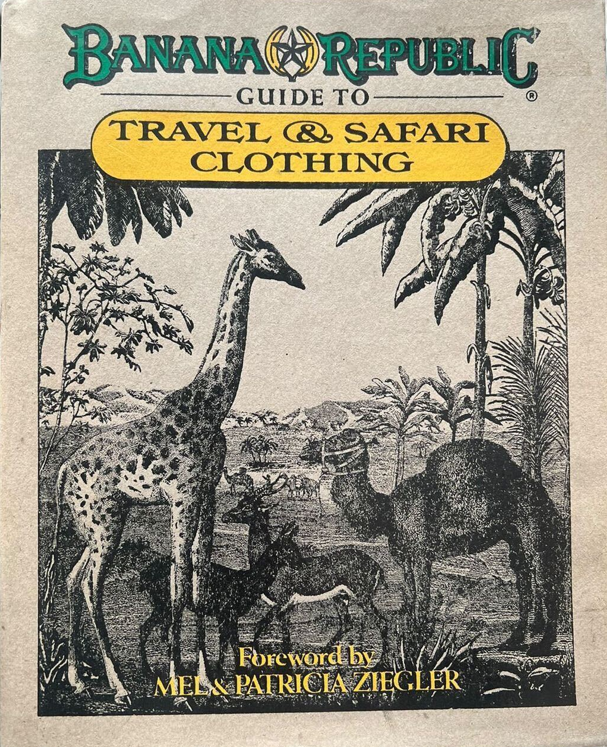
Right away you’ll notice that this cover looks like it belongs rolled up and tucked under the dash of a dusty Land Rover, compared with the glossy model-centric books that show up in your mailbox today. The paper is thick and matte, the illustration conjures up memories of lithographic prints in 19th century literary works, and above all the brand presents itself as a guide to “Travel” first, “Safari Clothing” second. This catalog, and as such Banana Republic, doesn’t just provide the clothing for your outdoor adventures, they supply a curated guide, rich with quotations from explorers, authors, philosophers, and the Zeigler’s themselves, focusing not just on what to wear, but how to explore in style. As we continue on, we will talk about the problematic aspects of this “style”, but for now let’s continue to discuss the stories that shape their brand.
Deeper into the book we come across a spread that exemplifies the central tone and perspective that the Zeigler’s are hoping to portray. Somewhere between self-conscious frivolity and deeply respectful patronage of the world, blending philosophy with witticism and travel with cultural immersion.
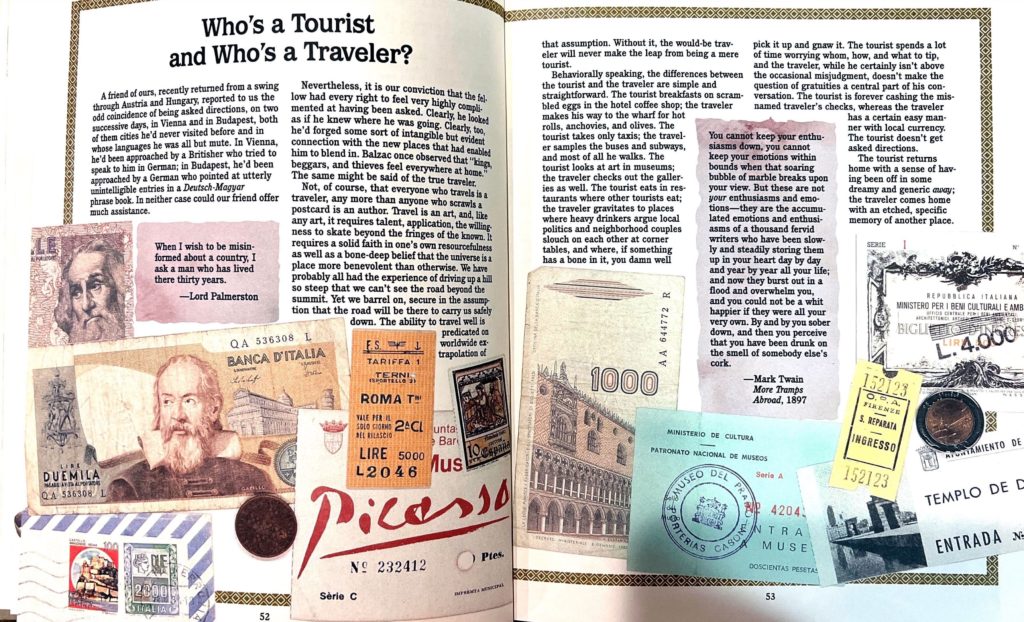
Amidst this wonderful collage of train tickets, passport stamps, foreign currencies, and general travel memorabilia, there is a section of dialogue not interested in selling clothing, or even mentioning the brand name – it is focused on simply asking a poignant question. We won’t analyze the entire text but there is one excerpt I would like to draw your attention to:
“Not, of course, that everyone who travels is a traveler, any more than anyone who scrawls a postcard is an author. Travel is an art, and, like any art, it requires talent, application, the willingness to skate beyond the fringes of the known. It requires a solid faith in one’s own resourcefulness as well as a bone-deep belief that the universe is a place more benevolent than otherwise.”
As we get farther into this catalog and begin to critique notions of lasting imperialism and the undertones of colonialism that are hard to shake from the designs and nomenclature surrounding ‘safari style’, I think it’s important to remember this passage and the others like it throughout the large narrative sections. As a company Banana Republic is trying to sell you products, and as such, they want to present a lifestyle that goes with their apparel, but simultaneously they are authentically approaching conversations surrounding travel with an appreciation for multi-cultural experiences and a desire to truly investigate what it means to go abroad, and what considerations one should make when doing so – not just whether to pack your Tropical Socks or your Bushman’s Raincoat.
Colorful Copy
As a copywriter, I am of course biased towards brands that are willing to dedicate valuable space on the page to narrative storytelling – but what Banana Republic has done in this 1986 catalog breaks the mold. Inside its pages you’ll find forms you vaguely recognize, a general structure of spreads that contain a product or two and what technically qualifies as a description of the apparel; but that’s where the similarities end. The product visuals are a combination of hand illustrations and prints all there to back up pages and pages of copy, much of which is not directly related to the product – that’s where the ingenuity lies.
As we stated earlier, Banana Republic constructs a lifestyle with their catalog. They assume you are already a worldly traveler eager for your next adventure (or at the very least want to appear as if you are). So, they don’t need to sell you a Denim Shirt, they just need to sell you their Denim Shirt, and their willing to spend 300-500 words to do so. The copy they use to tell their product stories is part Americana, part adventurer jargon, interspersed with a dash of philosophical nuance and iconic ’80s references. Whether it’s a quote from an Alaskan bush & glacier pilot, Cicero, or famous novelist Robert Louis Stevenson, as in the page below, each spread is rich with context and meaning, blurring the lines between the products and the lives they correspond to.
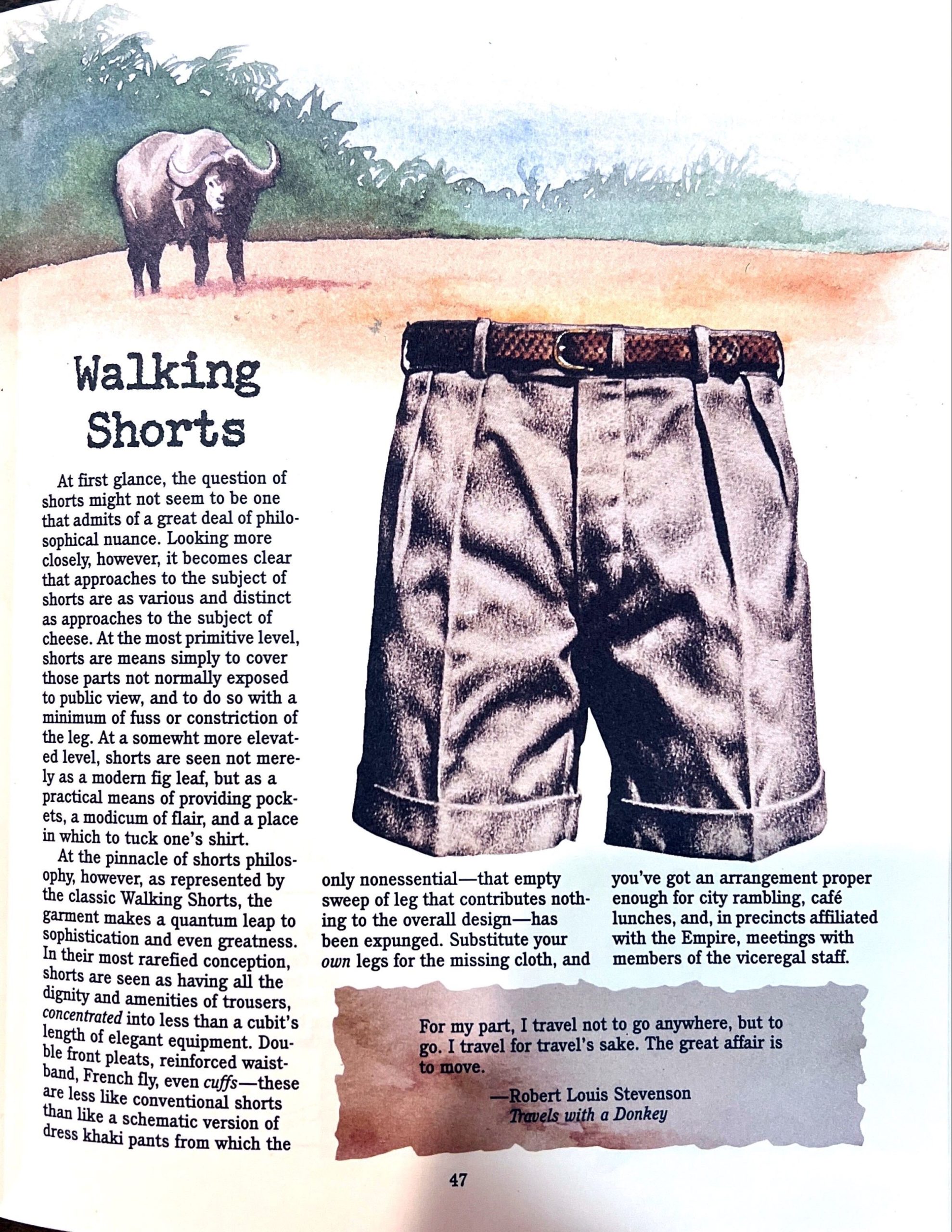
If you spend any time reading through the copy on these pages there’s one other element that will slowly rise to the surface. You might not notice it at first, but if you find yourself engaged and eagerly reading ahead, you’ll realize the language being used isn’t exactly what you’re used to. It’s elevated. It’s sentimental. It’s nostalgic and self-consciously pretentious. The book speaks to its readers as the intelligent, well-read, and insightful consumers we all imagine ourselves to be. From the first words on product spreads, the copy is rambunctious and entertaining. The cadence and diction might be academically playful – “At first glance, the question of shorts might not seem to be one that admits a great deal of philosophical nuance”. The copy might be dripping with ’80s America – “Before there were Marlboros, before there was Budweiser, before there was the El Camino, the Harley-Davidson, or the cheeseburger with all the trimmings, there was the denim shirt”. Better yet, there are moments where there is a surprising blend of cultures, occupations, and backgrounds all within a single spread that works to build the story of the book and the brand.
Lasting Legacy
From the front cover to the final spread, reviewing this book has been thoroughly enjoyable. Just like the readers in ’86 I delighted in the storytelling, the articles, the fiction pieces and quotes from actual explorers. The spreads are intriguing and well designed, the copy is unexpected and unlike anything you see on the racks or in your mailbox, and all of it works together to bring life to a brand that has struggled to adapt to a changing retail culture. As brick-and-mortar stores have closed in place of online commerce Banana Republic has lost a foothold of differentiation between itself and the other fast fashion retailers under Gap Incorporated. Their point of differentiation is based in the portrayal and descriptions of their travel-ready apparel and products – but it doesn’t come without a complicated relationship to some difficult topics. For the sake of time and context we will skip discussing the potentially problematic company name “Banana Republic.” Instead we will focus on the catalog itself. As I have hinted throughout this post, there is a certain level of inherent difficulty commenting on this book without also noting the larger shift away from the styles and naming conventions that surround “safari” styling in the fashion world. This clothing, and early Banana Republic, both drew direct inspiration from the Safari Suit, a beige or khaki colored outfit that we can all envision (if you’re having trouble, picture Van Pelt the main antagonist from the 1995 film Jumanji, complete with pith helmet and big game rifle). This suit originated in the 19th century, intended to be worn by Europeans on African or Indian expeditions, often focused on hunting large game. From those origins, it became entwined with the history and visual narrative of imperialism. A little of that history is present in this catalog as pictured in the spread below. While there is nothing particularly damning about the illustration, when situated against copy that at times shows its age (“back when men were men”), the graphics seem a little outdated and born out of travel that takes advantage of a local population rather than travel that is completely aware of its ramifications.
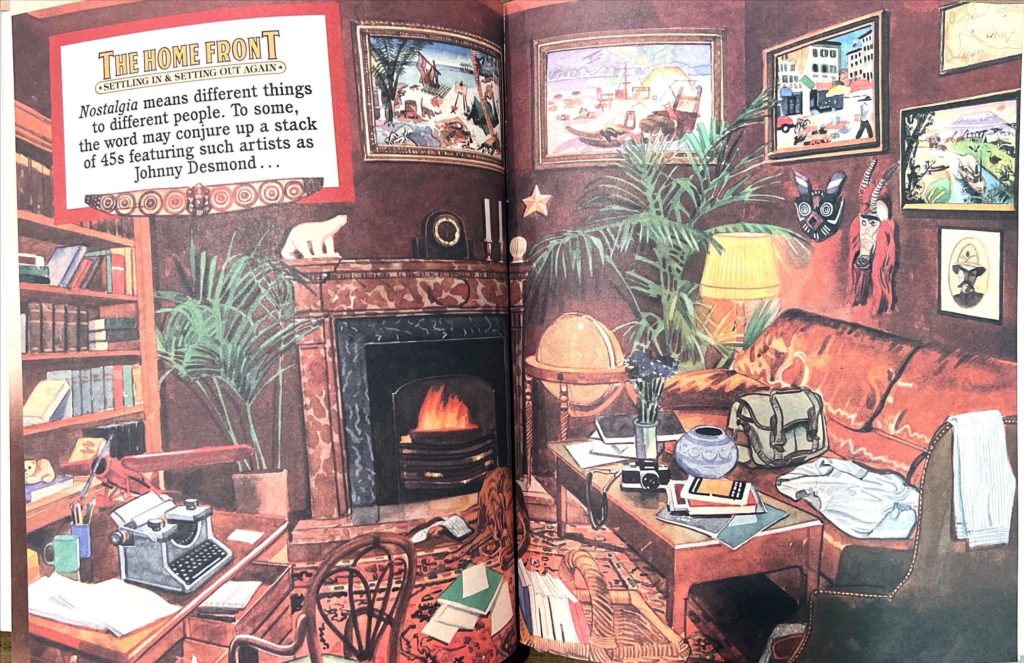
Writ-large this book remains largely unproblematic, focusing on travel, rather than ‘safari’. It builds its stories carefully, and manages to find a happy medium between the wistfulness of old-time tourism and modern sensibility. The passage of time has seen a shift in the fashion industry, with modern styles that draw inspiration from this period and location shifting into a more functional approach often referred to as “utility”. Looking at Banana Republic today, we can see this same shift reflected in their clothing and marketing. While the brand might not feature the passport stamped and road-weary stories of their past, the utilitarian benefits of their clothing are still present. Reading through their product descriptions online, the traces of exploration in cut and product specifications remain, however I can’t help miss the pages of copy that didn’t just sell me a product, but that told me a story. Sometimes remembering your past isn’t just about learning what went wrong along the way, it’s about learning what went right from the beginning. Though it is unlikely that Banana Republic will ever return completely to its narrative roots of 1986, if they could find the magical combination of story, lifestyle, and authenticity that made the original stores so successful, perhaps customers would get out from behind their screens and enjoy shopping again as theater, as an experience, as an adventure.
If you’re interested in seeing more from inside this catalog you can find a few additional spreads below:
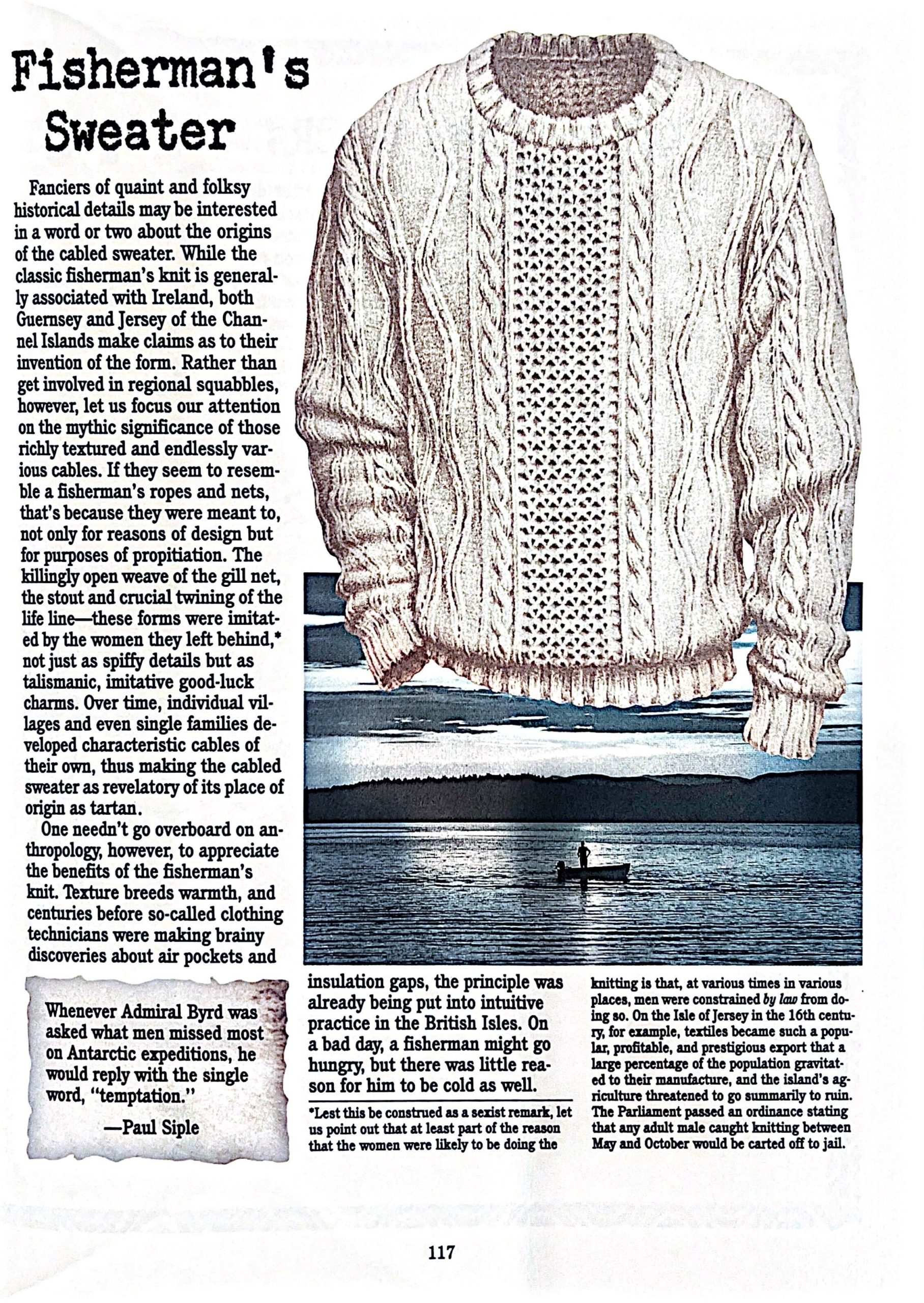
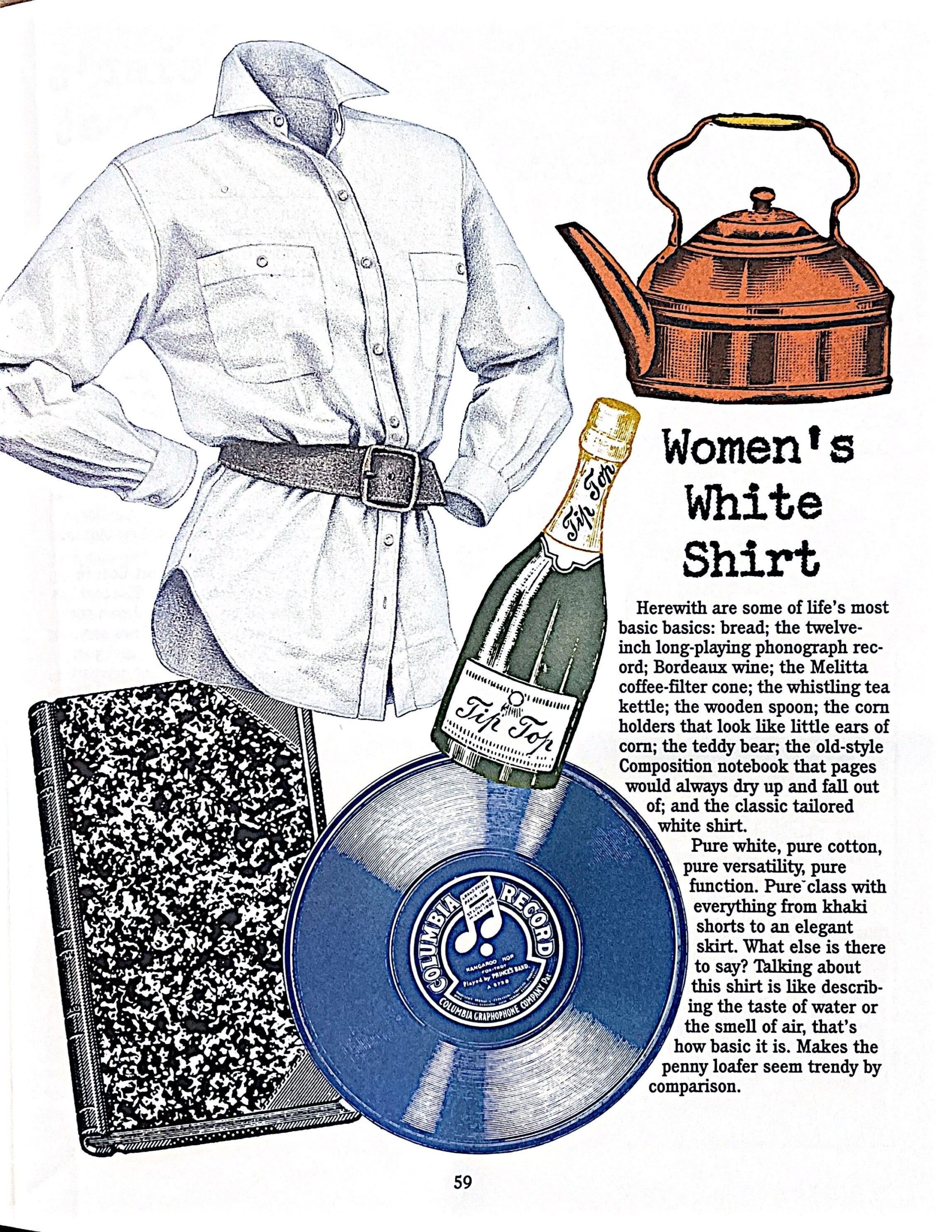
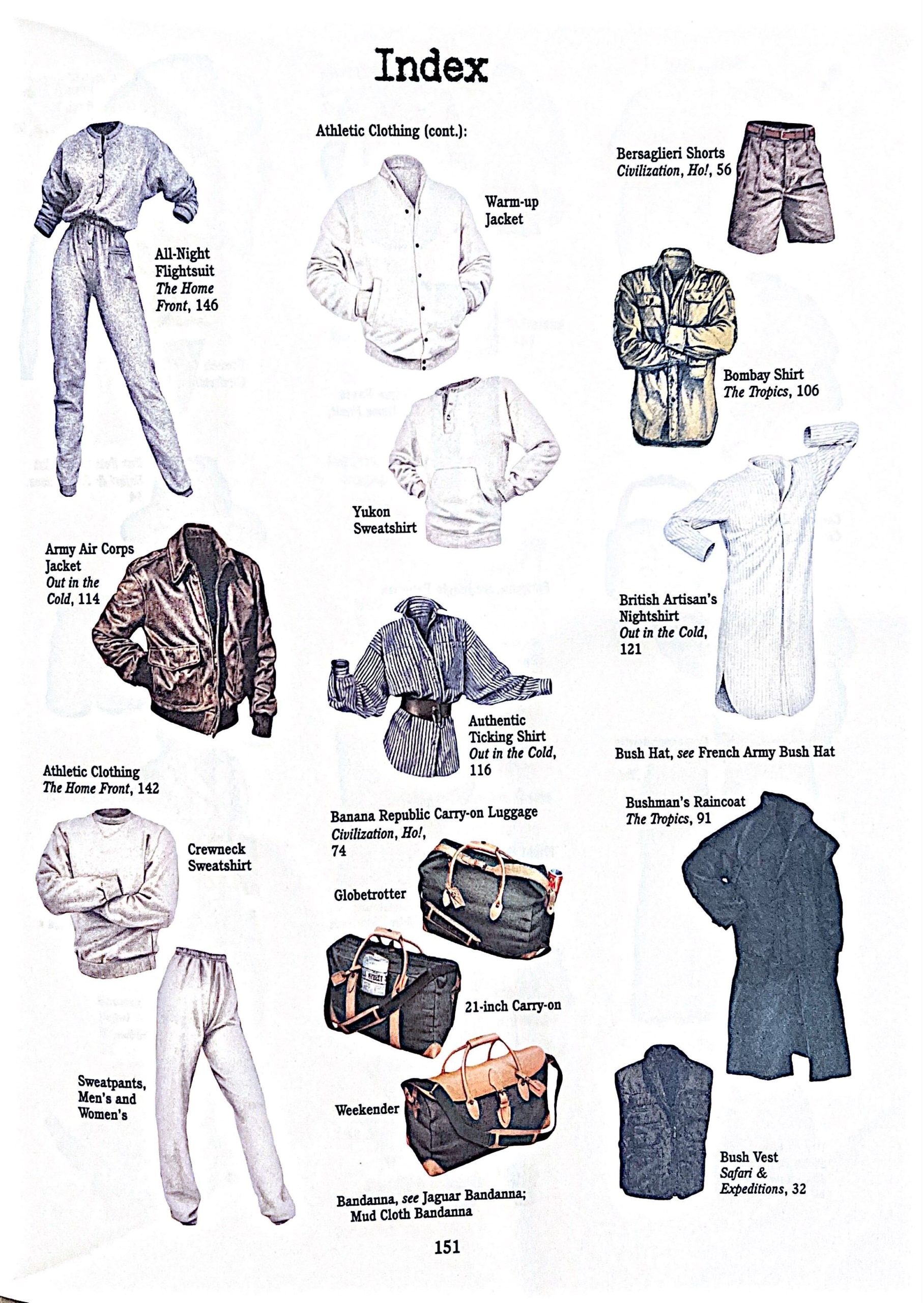
If you have a catalog or campaign you would like to see assessed or have questions on how to improve your own creative approach to marketing, reach out to Devon at devonc@jschmid.com.
Thanks to Unsplash for the cover image.
Tags: Banana Republic, catalog design, Customer Experience, Strategy
